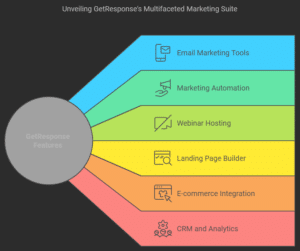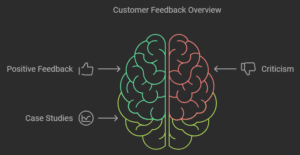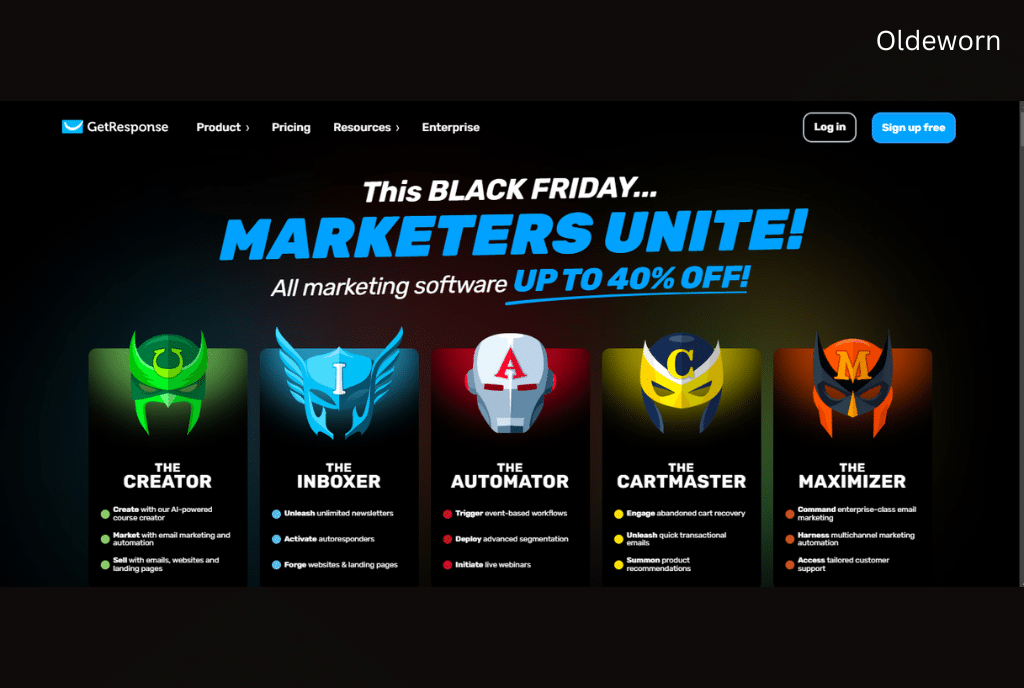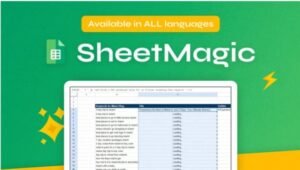Introduction
In today’s fast-paced digital landscape, businesses of all sizes rely on email marketing tools to connect with their audiences, nurture leads, and drive sales. Among the many options available, GetResponse stands out as a robust and versatile platform. With features ranging from email marketing and automation to webinars and CRM, it promises to be an all-in-one solution for modern marketers. But how well does it deliver?
Whether you’re a seasoned marketer or a small business owner, choosing the right tool can make or break your campaigns. In this article, we’ll explore GetResponse reviews, dissect its features, and determine if it’s the right fit for your business needs.
What is GetResponse?
GetResponse is a cloud-based marketing platform designed to help businesses manage email campaigns, automate workflows, and even host webinars. Founded in 1998 by Simon Grabowski, the platform has grown into a global tool used by over 350,000 customers across 183 countries. Its evolution from a simple autoresponder to a comprehensive marketing solution underscores its commitment to innovation.
At its core, GetResponse focuses on three pillars:
- Ease of use: A platform accessible to beginners and experts alike.
- Flexibility: Features that cater to diverse business needs.
- Scalability: Tools that grow alongside your business.
Features of GetResponse
Email Marketing Tools
GetResponse’s email marketing features are its bread and butter. The drag-and-drop email editor allows users to design stunning emails without any coding skills. A library of customizable templates ensures you can craft campaigns that align with your brand.
- Personalization tools help create targeted messages for different audience segments.
- Advanced scheduling ensures emails are sent at optimal times to maximize open rates.
Marketing Automation
GetResponse’s automation tools enable you to build intricate workflows that cater to specific customer actions. For example:
- Triggers such as email opens or purchases initiate tailored follow-ups.
- The visual workflow builder simplifies creating customer journey maps, making automation intuitive even for beginners.
Webinar Hosting
Unlike most email marketing platforms, GetResponse includes a webinar hosting feature, making it a standout choice for businesses that value real-time engagement. You can:
- Integrate webinars with email campaigns for seamless promotion.
- Utilize tools like screen sharing, polls, and chat to foster interaction.
Landing Page Builder
Creating high-converting landing pages is a breeze with GetResponse’s builder. Key features include:
- Pre-designed templates optimized for various goals (e.g., lead capture, sales).
- A/B testing options to refine pages for better performance.
E-commerce Integration
For online businesses, GetResponse offers tools to connect your e-commerce store directly to the platform. This integration lets you:
- Send abandoned cart emails to recover lost sales.
- Track purchase behaviors and automate personalized offers.
CRM and Analytics
GetResponse’s built-in CRM (Customer Relationship Management) system provides a centralized way to manage leads and sales. Coupled with robust analytics, it ensures you’re always informed about your campaign performance.
Ease of Use
One of GetResponse’s major selling points is its user-friendly interface. Navigating the platform feels intuitive, thanks to its well-organized dashboard. Setting up campaigns, workflows, and integrations is straightforward, even for those new to digital marketing.
Additionally, GetResponse offers:
- Step-by-step tutorials for beginners.
- A responsive support team available via chat and email.

Pricing Plans and Value for Money
GetResponse offers tiered pricing plans to cater to businesses of all sizes. Here’s a breakdown:
- Free Plan – Basic email marketing tools with a 500-subscriber limit.
- Email Marketing Plan – Starting at $15/month, this plan includes autoresponders and analytics.
- Marketing Automation Plan – At $49/month, it adds advanced automation and webinar features.
- E-commerce Marketing Plan – $119/month, perfect for online stores needing extensive e-commerce tools.
Compared to competitors like Mailchimp or ActiveCampaign, GetResponse provides excellent value, especially for those needing diverse features under one roof.
Pros of GetResponse
GetResponse has carved a niche in the crowded email marketing space, and its strengths make it a top choice for businesses of varying sizes. Let’s break down the key advantages:
- User-Friendly Interface
Even if you’re new to email marketing, GetResponse’s clean and intuitive design ensures a seamless experience. The platform provides clear guidance, and you’ll find it easy to locate features, create campaigns, and manage workflows. It’s a solution that grows with your skills. - Comprehensive All-in-One Solution
GetResponse combines email marketing, automation, CRM, landing pages, and webinar hosting in one platform. This eliminates the hassle (and cost) of juggling multiple tools, making it a true “Swiss Army knife” for marketers. - Great for Small to Medium Businesses (SMBs)
SMBs benefit from its affordable pricing tiers and the sheer variety of tools that cater to their needs. Whether you’re running a solo operation or managing a small team, GetResponse offers scalability without breaking the bank. - Powerful Automation Features
The marketing automation tools in GetResponse are among the most advanced in its class. You can craft intricate workflows tailored to your audience’s journey, ensuring higher engagement rates and better ROI. - Exceptional Webinar Hosting
Hosting webinars directly within your marketing tool is a unique feature that sets GetResponse apart. With tools for registration, promotion, and follow-up, you can create a seamless experience for attendees. - Data-Driven Insights
GetResponse’s analytics features are robust, providing detailed insights into email performance, customer journeys, and ROI. This helps marketers refine their strategies for maximum impact.
Cons of GetResponse
While GetResponse offers a plethora of features, no tool is without flaws. Here are some downsides to consider:
- Pricing for Advanced Features
While its pricing is competitive for basic plans, features like marketing automation and webinar hosting come at a premium. This could be a barrier for smaller businesses or those on tight budgets. - Steeper Learning Curve for Advanced Features
While the platform is beginner-friendly, advanced features like automation workflows and CRM integrations may require some time to master. - Limited for Larger Enterprises
Large corporations with extensive marketing needs might find GetResponse lacking in enterprise-level features compared to competitors like HubSpot. - Customer Support Response Times
Although support is available via chat and email, some users report slower-than-expected response times during peak periods.
Who Should Use GetResponse?
GetResponse is designed for a wide audience, but certain groups will benefit the most:
- Small Businesses and Startups: If you’re just starting out, GetResponse’s email marketing and automation tools can help establish a strong marketing foundation without overwhelming you.
- E-Commerce Stores: With e-commerce integrations and abandoned cart features, online retailers can drive sales effectively.
- Coaches and Educators: The webinar hosting feature is a boon for individuals running online classes, workshops, or training programs.
- Marketers Focused on Automation: Businesses looking to create complex customer journeys will appreciate the platform’s automation capabilities.
Customer Reviews and Testimonials
Understanding real-world experiences is crucial. Here’s a summary of customer feedback:
- Positive Feedback
- Ease of Use: Many users highlight the intuitive design and how quickly they could set up campaigns.
- Automation Excellence: Users appreciate the powerful automation workflows that help save time and boost engagement.
- Webinar Features: Businesses hosting webinars rave about the seamless integration with email campaigns and the tools provided for interaction.
- Criticism
- Pricing for Advanced Plans: Some customers feel the higher-tier plans could be more affordable.
- Occasional Bugs: A few users have mentioned occasional bugs, though these are typically addressed quickly by the support team.
- Case Studies
Small business owners report achieving up to a 30% increase in email open rates after switching to GetResponse. Others noted a significant improvement in lead nurturing through automated workflows.

Competitors of GetResponse
Let’s compare GetResponse to its top competitors to see how it stacks up:
- Mailchimp
- Strengths: Excellent for beginners, wide array of templates, free plan available.
- Weaknesses: Limited automation features compared to GetResponse.
- ActiveCampaign
- Strengths: Superior automation capabilities, advanced segmentation.
- Weaknesses: Steeper learning curve and higher price point.
- HubSpot
- Strengths: Comprehensive CRM integration, enterprise-grade features.
- Weaknesses: Expensive for smaller businesses and startups.
Each platform has its unique selling points, but GetResponse offers a balanced blend of affordability, features, and usability.
Security and Data Privacy
Security is a critical concern for any business handling customer data. GetResponse adheres to stringent protocols to ensure the safety of your information:
- Compliance: The platform complies with GDPR, ensuring data privacy for European users.
- Encryption: All data is encrypted both in transit and at rest.
- Regular Audits: GetResponse undergoes regular security audits to identify and fix vulnerabilities.
These measures make GetResponse a reliable choice for businesses prioritizing security.
Integrations with Other Tools
GetResponse seamlessly integrates with a variety of third-party tools, enhancing its functionality:
- CRM Tools: Salesforce, Pipedrive.
- E-Commerce Platforms: Shopify, WooCommerce.
- Social Media and Ads: Facebook, Google Ads.
- Productivity Tools: Zapier, Slack.
These integrations ensure you can streamline your workflow and connect GetResponse to your existing tech stack effortlessly.
Tips for Maximizing GetResponse Usage
Want to get the most out of GetResponse? Here are some tips:
- Leverage Segmentation: Divide your audience into specific segments for highly targeted email campaigns.
- Test, Test, Test: Use A/B testing for subject lines, email content, and landing pages to identify what resonates best.
- Automate Customer Journeys: Build workflows that guide customers from the first touchpoint to conversion seamlessly.
- Analyze and Optimize: Regularly review analytics to identify areas of improvement in your campaigns.
Final Verdict
GetResponse is an excellent marketing tool that combines versatility, ease of use, and affordability. Its all-in-one nature makes it particularly valuable for small to medium businesses and marketers looking to simplify their workflow. While it has some limitations, such as pricing for advanced features, its strengths far outweigh the drawbacks.
Whether you’re new to email marketing or a seasoned pro, GetResponse has something to offer. With robust tools for email campaigns, automation, webinars, and analytics, it’s a platform that delivers real value for money.
FAQs
- Is GetResponse suitable for beginners?
Yes, its intuitive interface and extensive tutorials make it an excellent choice for beginners. - Does GetResponse offer a free plan?
Yes, GetResponse has a free plan with basic email marketing tools and a 500-subscriber limit. - Can GetResponse replace a CRM system?
While it includes CRM features, it may not match the capabilities of standalone CRM platforms like HubSpot. - How does GetResponse compare to Mailchimp?
GetResponse offers more advanced automation and webinar hosting, whereas Mailchimp is better suited for beginners with simpler needs. - What support options does GetResponse provide?
GetResponse offers live chat, email support, and an extensive knowledge base for users.




